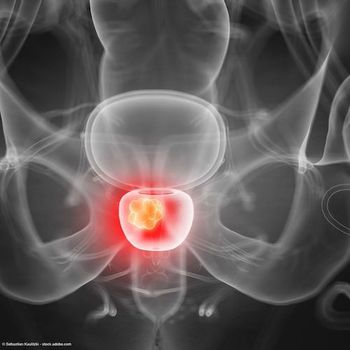
Extender device yields good results in Peyronie's disease
Daily use of a penile extender device shows promise as a safe, effective, and noninvasive treatment for Peyronie's disease.
The pilot study enrolled 10 men with documented Peyronie's disease who wore the penile extender device (FS Extender, FS Physiomed, Aliso Viejo, CA) for a minimum of 2 hours a day. At the end of 6 months, all 10 men benefited with improvements in curvature, erect girth, and penile length, researchers reported at the Sexual Medicine Society of North America winter scientific meeting.
The objective benefits were accompanied by improvements in erectile and sexual function and quality of life measured by the International Index of Erectile Function (IIEF), IIEF-Erectile Function domain, and QOL-MED. There were no significant adverse effects, and patient satisfaction with the treatment was very high.
"Based on the positive experience in this small trial, we believe further studies are warranted in larger patient groups and with longer follow-up. We are also interested in whether combining this penile traction therapy with other nonsurgical therapies might provide additional benefit to patients."
The men enrolled in the pilot study had a mean age of about 56 years and their curvature, measured with a protractor, ranged from 30 to 85 degrees. Nine men had failed previous therapies including oral agents, verapamil injections, and therapeutic ultrasound.
Patients returned for follow-up after 3 months, but they received a weekly phone call to encourage compliance with wearing the traction device and to inquire about whether they were experiencing any problems.
Positive changes
Changes in curvature and flexural strength at the proportional limit (FSPL) were all noted after 3 months, and there was continued improvement over the next 3 months of the study. Objective curvature, measured by penile duplex ultrasound, improved significantly by 17 degrees (range, 10 to 45 degrees) from 51 degrees at baseline to 34 degrees at 6 months.
Erect girth increased in all men by 0.5 cm to 1.0 cm. Four patients had a hinge effect on ultrasound and all four felt they were improved after treatment.
Average FSPL, measured from pubis to corona, increased from 10.65 cm at baseline to 12.0 cm (range, 0.5 to 2.0 cm), and the IIEF-EF score increased from 18.3 at enrollment to 23.4 after 6 months, although improvements were noted in only 7 of the 10 men.
"We were encouraged to see positive changes in our objective measures in all patients at 3 months, and then to find the benefit was durable and even increased at 6 months," Dr. Taylor told Urology Times. "And although the changes in IIEF-EF and penile length failed to achieve statistical significance, we believe that is likely due to insufficient power in this small study."
Newsletter
Stay current with the latest urology news and practice-changing insights — sign up now for the essential updates every urologist needs.




















